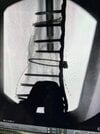I’ve seen the same with Intracept. “No auth required”.
Intracept listed as experimental/investigational. Experimental/investigational not covered/paid.
yah, no thank you.
Also I’m told from my business office that it’s illegal to to have the patient pay cash when something is approved by insurance but they wont pay or only pay partial costs. I’m sure others know more about this stuff than I, but essentially if you have an approved procedure and you move forward with it, then you accepting the contractual agreement and that might mean no beans. Not sure if directly applicable to the deposit situation
@powermd it thought I’d mention. We are actively working through this situation for an Intracept patient. Worth discussing if others can chime in!



